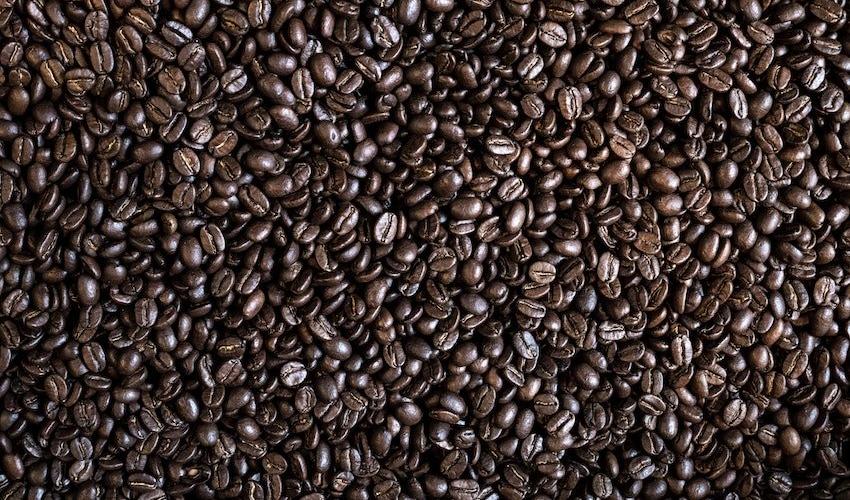
The aroma of coffee is not merely a byproduct of brewing; it is the soul of the coffee experience, a complex amalgamation of volatile compounds that evoke pleasure, nostalgia, and anticipation. This olfactory experience is central to coffee’s appeal, transcending the mere taste to evoke a rich sensory experience.
The fragrance of freshly ground beans or the comforting smell of a brewing pot can transform ordinary moments into rituals, making coffee aroma a crucial aspect of coffee culture and enjoyment.
Factors Influencing Coffee Aroma
Roasting
Roasting coffee beans is an art form that significantly impacts the aroma of the final product. The process transforms the green beans into the rich, aromatic coffee we cherish. During roasting, chemical reactions create a multitude of aromatic compounds.
Light roasts retain more of the bean’s original floral and fruity notes, while dark roasts develop deeper, bolder aromas with hints of chocolate and caramel. The peak aroma, however, occurs shortly after roasting, underscoring the importance of freshness in enjoying the full sensory experience of coffee.
Read more about Keurig Vs Drip Coffee.
Freshness
The freshness of coffee beans is paramount in preserving their aroma. Once roasted, coffee beans begin to release their volatile compounds—a process that accelerates once ground. Freshly roasted, whole beans, stored properly, can maintain their aroma for weeks, offering a superior olfactory experience compared to pre-ground coffee.
This emphasizes the importance of buying coffee as close to the roasting date as possible and storing it in airtight containers to lock in its aromatic profile.
Bean Origin
The origin of coffee beans plays a crucial role in determining their aroma. Different regions impart unique characteristics to their beans, influenced by the local climate, soil composition, and cultivation methods. For instance, Ethiopian beans are renowned for their floral and fruity aromas, while Sumatran coffees offer earthy and spicy notes.
The diversity in aroma among beans from various origins highlights the global tapestry of coffee culture, offering enthusiasts a world of scents to explore and enjoy.
Read more about How to Make Japanese Drip Coffee.
Types of Coffee Beans and Their Aromas
The coffee world is predominantly ruled by two species of beans, Arabica and Robusta, each with distinct characteristics and aromas that appeal to various palates.
Arabica Beans
Arabica beans are celebrated for their smooth, complex flavor profiles, often featuring hints of fruit and sugar, with higher acidity and a winey taste compared to Robusta. The aromas can range from sweet and soft to sharp and tangy, often with fruity or floral notes that make them highly prized among coffee connoisseurs.
Arabica beans are predominantly grown in Latin America, eastern Africa, Asia, and Arabia, with each region contributing to the bean’s unique scent profile due to differing soil, climate, and elevation.
Robusta Beans
In contrast, Robusta beans pack a punch with their strong, robust flavor and a grain-like overtone that can hint at chocolate. They are typically more bitter and contain higher caffeine levels than Arabica, which contributes to their intense, sometimes harsh aroma.
Robusta beans are often grown in Africa and Indonesia and are favored for their bold, earthy aromas that are more pronounced and less acidic than those found in Arabica beans.
Read more about James Hoffmann Drip Coffee Ratio.
Exceptional Aromas: Kona and Blue Mountain
Among the world’s coffee, Kona and Blue Mountain beans stand out for their exceptional aromas. Kona coffee, grown on the slopes of Hawaii’s Mauna Loa, offers a unique aromatic profile with a smooth, rich body and a bright, clear flavor, often with notes of nuts and spices. Its aroma is as inviting as it is sophisticated, reflecting the volcanic soil and island climate of its origin.
Blue Mountain coffee, cultivated in Jamaica’s Blue Mountains, is renowned for its mild flavor and lack of bitterness. Its aroma is notably clean and mild, with a wide range of floral, herbal, and nutty notes, making it one of the most sought-after and expensive coffees in the world.
The Role of Roasting in Aroma
Roasting plays a pivotal role in developing a coffee bean’s aroma. The process not only darkens the beans but also significantly alters their chemical makeup, releasing a spectrum of aromatic compounds. Light roasts tend to preserve the bean’s original floral and fruity notes, making them ideal for those who appreciate a subtler coffee aroma. Medium roasts offer a balanced aroma, highlighting both the bean’s natural qualities and the richer, caramelized scents developed during roasting.
Dark roasts, on the other hand, are characterized by their bold, smoky, and sometimes spicy aromas, with the original qualities of the bean taking a backseat to the intense flavors created by the roasting process itself.
Read more about How To Make Good Drip Coffee.
Buying Guide for the Best Smelling Coffee Beans
When selecting coffee beans for their aroma, freshness is paramount. Freshly roasted beans offer the most potent and delightful aromas. Look for beans roasted within the past two weeks, and pay attention to packaging dates. Opt for beans sold in valve-sealed bags, which allow gases to escape without letting air in, preserving the beans’ aromatic qualities.
Storage is equally crucial; after purchase, transfer beans to an airtight container and keep them in a cool, dark place. Avoid refrigeration, as moisture can degrade the beans’ flavors. Remember, whole beans maintain their aroma longer than ground coffee, so grind just before brewing for the freshest experience.
Brewing Techniques for Maximizing Aroma
To fully appreciate the aroma of coffee, consider the brewing method. Pour-over and French press methods allow for better aroma release, as they expose more coffee surface to water. The pour-over method, in particular, enables a slow and steady extraction, capturing the full range of aromatic compounds.
Water temperature is also critical; aim for 195°F to 205°F to extract the coffee’s full flavor without burning the beans. Pre-wetting the grounds can enhance aroma release by allowing the coffee to “bloom,” releasing carbon dioxide and opening up the flavors for a more aromatic brew.
Read more about Ice Drip Coffee.
DIY Aroma Enhancers at Home
Coffee beans can be more than just a beverage ingredient; they can also enhance your home’s aroma. Used coffee grounds make excellent natural deodorizers. Place them in bowls around your home to absorb odors and impart a subtle coffee scent.
For a more direct fragrance, lightly roast whole beans in the oven and leave them in an open container as a room freshener. Coffee-scented candles, made by embedding beans in candle wax, can also fill your space with the warm, comforting aroma of coffee.
FAQs
- How should I store coffee beans to preserve their smell? Keep coffee beans in an airtight container at room temperature, away from direct sunlight and moisture, to preserve their aroma.
- What’s the difference between coffee fragrance and aroma? The fragrance refers to the smell of coffee beans before they are brewed, while aroma describes the scent of brewed coffee.
Final Thoughts
Exploring the world of coffee aromas is a delightful sensory journey. From selecting the freshest beans with enticing aromas to employing brewing techniques that maximize their scents, coffee lovers can enhance their drinking experience significantly. DIY methods for using coffee as an aroma enhancer at home further celebrate the bean’s fragrant versatility.
Understanding and appreciating these nuances brings a deeper joy and complexity to the ritual of coffee drinking, making each cup a rich and aromatic discovery.









